
Turtle
Turtle
Turtle
When it comes to turtles, their slow movements and shells are characteristic. They are also familiar creatures that can be kept as pets. However, there are problems such as abandonment and an increase in invasive species. Let’s take a closer look at turtles.
Turtle Basic Infomation
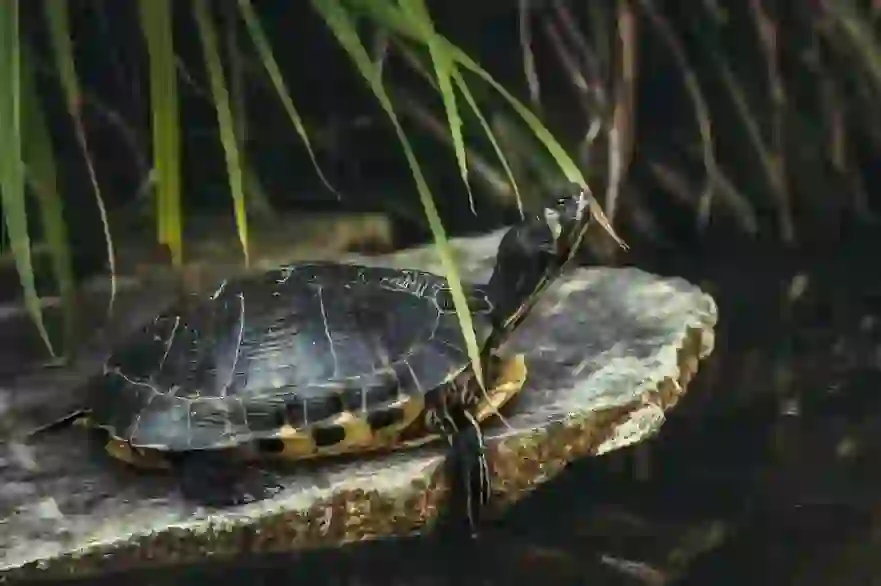
Reptilia-Testudines.
Smallest species stinkpot turtle Length:about 13cm weight:about 600g.
Largest species leatherback turtle Length:about 120~189㎝ weight:about 916㎏.
There are about 300 species of turtles and they inhabit a wide range of countries. Turtles can be broadly classified into three types. 1)species that live on land. In other words, it is also called a land species. In the case of turtles, it refers to tortoises. The characteristics of land species are that the shell is dome-shaped and bulging, and the hands and feet are covered with claws and hard scales to protect themselves from enemies. They live by eating grass, tree buds, fruits, etc.
2)Species that live in water. In other words, it is also called a sea species. In the case of turtles, it refers to sea turtles, soft-shelled turtles, and snapping turtles. The characteristics of sea species are that the shell is flat and designed to reduce water resistance. The shape of the hands and feet is also flat and easy to scratch water, and there are no claws. The hands and feet cannot be retracted into the shell. They eat clams, hermit crabs, seaweed, jellyfish, etc. When laying eggs, they land on sandy beaches, but otherwise live in the sea.
3)A species that inhabits both land and water. In the case of turtles, it refers to reeve's pond turtles, pond turtles, and red-eared sliders. The characteristics of turtles that live in both water and land are that they have claws on their hands and feet so that they can live on land and in water, and they also have webbed feet so that they can swim. They can retract their hands and feet into the shell. They are omnivorous and can eat both plants and animals. When they are young, they eat soft grass, but as they grow larger, they can eat small fish and insects. To narrow down the types of turtles, you can refer to the characteristics of turtles and judge them by the shape of their hands and feet and the shape of their shells.
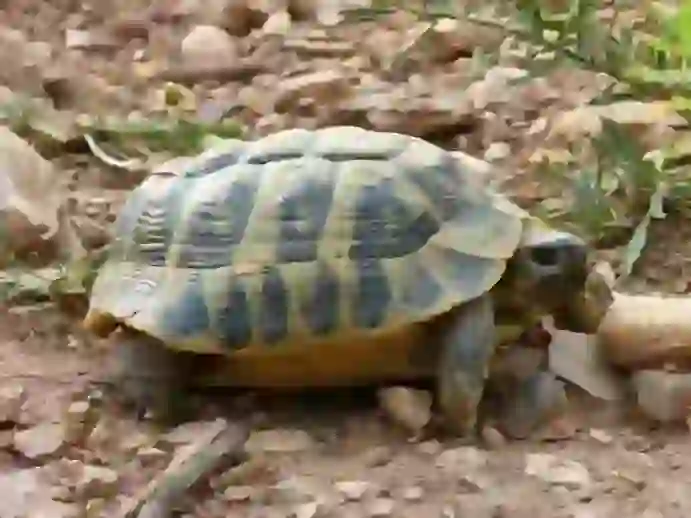
A popular animal for pet breeding.
If you want to keep a rare animal, you may need to follow the laws established by the country. This time, I will introduce whether it is possible to keep an elephant at home in Japan. Turtles became popular when they were imported from overseas for pets around 1950. There was also a time when there were turtle scoops like goldfish scoops. The personality of turtles is generally gentle and timid. When they get used to humans, they become friendly and come closer. However, when they become adults, they can become aggressive and some owners have been bitten, so you need to be careful.
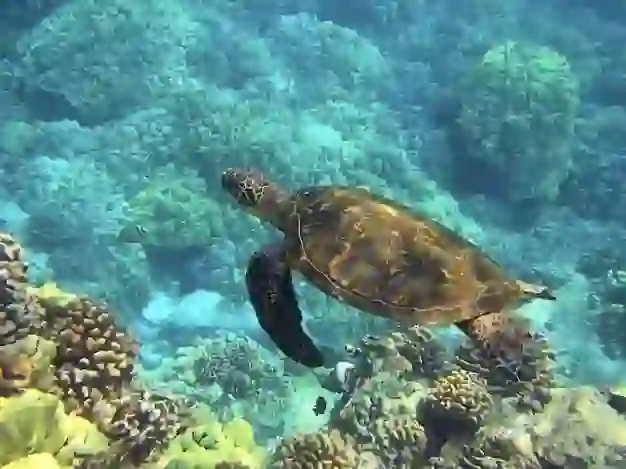
What should I feed them?
The food for tortoises and water turtles varies because they live in different environments. For tortoises, the main food is vegetables. Cut carrots, pumpkins, corn, bok choy, cactus, etc. and give them to your turtle. If you are concerned about nutrition, you can also mix in artificial feed. It is also recommended to give them natural snacks such as dandelions and clovers that grow naturally. They like to eat them, so look for clean places to find them. For water turtles, the main food is artificial feed. It is made with nutritional balance in mind, so this feed alone is sufficient. If you are keeping a turtle species that is strongly carnivorous, you will also need live bait. Live bait is live food such as medaka, dojou, mealworm and crickets. You can buy them at a pet shop.
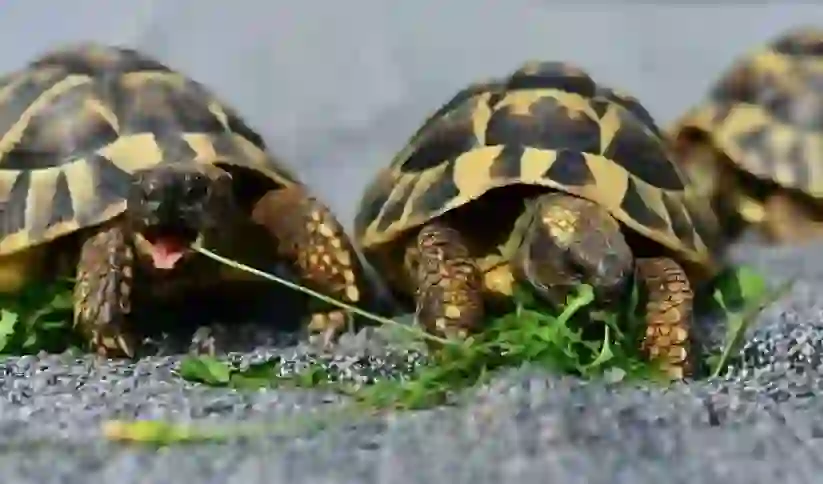
About the breeding environment.
There are seven things that are necessary for tortoises. 1)Housing case. 2)Ultraviolet light. 3)Heating equipment. 4)Thermohygrometer. 5)Floor material. 6)Shelter. 7)Feeder and waterer. There are three important points to consider when raising tortoises. Point 1: Secure a space where the tortoise can move around. Choose a housing case that is large enough for the tortoise to walk around. A small housing case can cause lack of exercise and stress. Point 2: Create an environment where the tortoise can be exposed to ultraviolet light. Tortoises can synthesize vitamin D3 by being exposed to ultraviolet light. Install lighting so that they can be exposed to ultraviolet light for about 12 hours a day. Point 3: Manage the temperature inside the cage firmly. Install a thermometer and heating equipment so that the temperature inside the cage can be maintained at 26-36℃. There are five things that are necessary for water turtles. 1)Aquarium. 2)Filter. 3)Ultraviolet light. 4)Land. 5)Heater. There are three important points to consider when raising water turtles. Point 1: Consider the ratio of land to water. The ideal ratio is about 3:7 for land and water, so lay out the aquarium accordingly. Adjust the water level to about 2-3 times the height of the turtle’s body. Some turtles are good swimmers and some are not, so watch their behavior and add more water if necessary. Point 2: Manage the temperature firmly. The temperature at which water turtles can move actively is 23-28℃. If the temperature drops below 20℃, their appetite decreases, and if it drops below 15℃, they hibernate. Point 3: Be careful about how you feed them. When they are young, give them an amount that they can eat without leaving any leftovers every day to help them grow. Once the turtle is an adult, once every 1-2 days is fine. Be careful not to give them more food than they can eat, as this will cause the water to become dirty.

There are two points to keep in mind when breeding.
1)Be careful of bacteria in turtles. Turtles carry “Salmonella,” which can cause food poisoning in humans. They may also carry other bacteria, so be sure to wash your hands after touching them. 2)Keep the turtle until the end. Some species of turtles grow up to about 30 centimeters as they grow up, although young turtles are small and easy to keep. Therefore, some people abandon their turtles because they grow too big. Before you keep a turtle, find out how much it will grow in advance. Keeping a pet is also a matter of life and death, so please take responsibility for raising it until the end.
Turtle Q&A

How hard does a turtle bite?
When they are young, turtles do not have much biting power, but as their bodies grow, so does their biting power. Among turtles, the Alligator snapping turtle is famous for its strong biting power. How strong is the Alligator snapping turtle’s biting power? The Alligator snapping turtle is a carnivorous species and grows up to about 1.2 meters in length with muscular body. As it grows so big, its biting power also becomes stronger. The Alligator snapping turtle’s biting power is generally said to be between 300 and 400 kg. Imagine the weight of a large motorcycle when bitten. There is also a possibility that your fingers will be lost if you are not careful. They basically live in water, so you won’t see them often. Be careful not to touch wild turtles casually even if you see them.

What is a turtle shell made of?
Are you curious about what a turtle’s shell is made of? Actually, a turtle’s shell is part of its body made up of ribs and vertebrae. The surface of the shell is covered with a hard substance similar to human nails. The difference between humans and turtles is the shape of the ribs. Human ribs are characterized by curved bones that protect the lungs and heart. Turtle ribs can grow straight as they grow. Also, only turtles have their shoulder blades positioned inside their ribs among vertebrates. You can see that the structure of their bones is quite different from other living things.

How long can a turtle stay in the water?
Turtles, which are reptiles, breathe through their lungs and periodically raise their heads above the water surface to breathe. Freshwater turtles and sea turtles have different diving times. Red-eared sliders living in freshwater can dive for about an hour. Loggerhead turtles and green turtles living in the sea can dive for about two hours. The longest diving time is five months for leatherback turtles. The duration of diving is greatly related to the environment in which they live. Sea turtles have to dive deep, so they naturally dive longer.

How long do turtles live?
In Japan, there is a proverb that says “Cranes live for a thousand years, and turtles live for ten thousand years.” Turtles have been a symbol of longevity since ancient times. Do turtles really live for ten thousand years? Actually, turtles live longer than other pets, but they cannot live for ten thousand years. However, the longest-lived turtle on record is the Galapagos giant tortoise, which lived to be 175 years old. It is known that large turtles live much longer than humans. Red-eared sliders, which are abundant in Japan, live for about 40 years, while Reeve’s pond turtles live for about 60 years. The aggressive alligator snapping turtle lives for 150 years. It is not clear why they live so long. Turtles of any species live for decades, so it is recommended that you keep them until the end of their lives.

How can a female turtle lay fertilized eggs without mating for several years?
In fact, female turtles have the ability to store sperm from males for several years. This is called delayed fertilization. Therefore, they can continue to lay fertilized eggs using stored sperm for several years without mating. They have an amazing ability. It seems that it is also a factor that turtles are easy to breed.
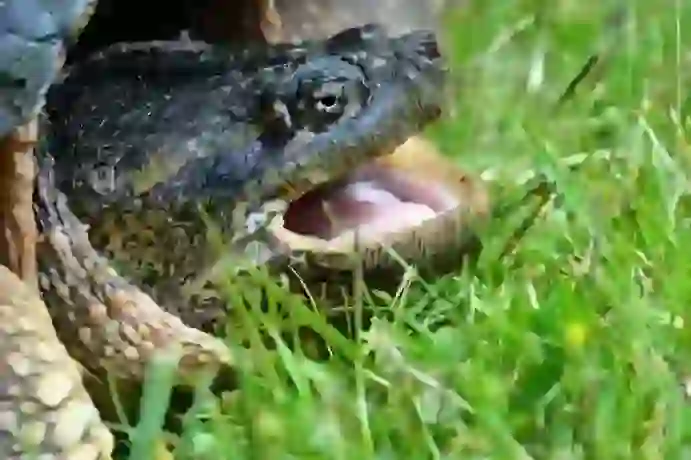
How is the sex of a turtle determined?
The sex of turtles is determined by the temperature environment when they are in the egg. When the temperature is high for a long time while they are in the egg, the probability of female turtles being born increases. Recently, due to the effects of global warming, it has become a problem that only female sea turtles are more likely to be born in Australia because the temperature is often high. Since only a handful of males are born, there is an imbalance. The effects of global warming not only affect the habitats of animals but also their sex. We need to take measures considering that global warming will become more serious in the future.
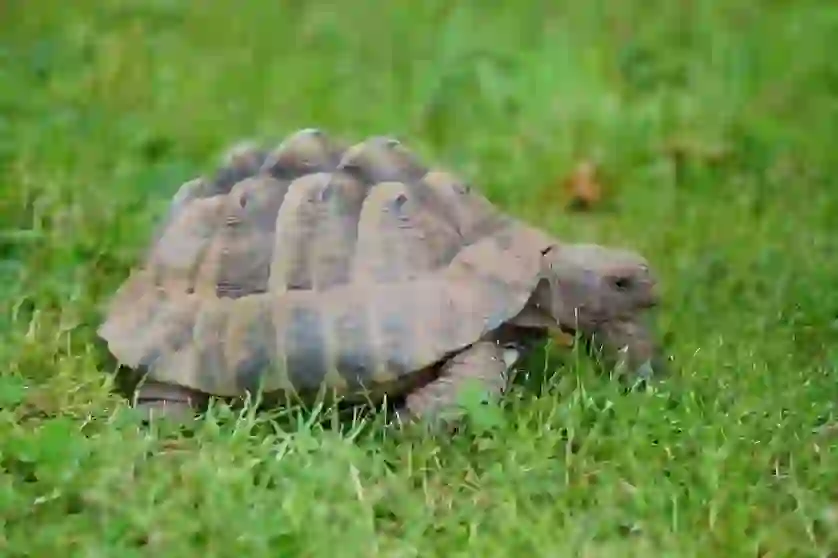
Why did the number of alien turtles increase?
The most commonly seen turtle is the red-eared slider, which is an invasive species. The turtle is easy to identify because it has a red line on the side of its face and yellow and black stripes on its shell. The red-eared slider was imported from the United States as a pet. When they are young, they are small in size, but as they grow, they can reach a size of about 20-30 cm, so the number of owners who abandon them has increased. Are abandoned pets the only reason why invasive turtles have increased? Let’s compare native species that have existed in Japan from the beginning and invasive species imported from overseas.
The Japanese Pond Turtle is a native species of Japan, but it is also a species whose numbers are decreasing in various regions. Compared to the red-eared slider, the Japanese Pond Turtle is smaller in size and loses out to invasive species in terms of food and habitat. Invasive species have the ability to withstand any harsh environment unlike native turtles. It can be said that native turtles are at a disadvantage because they do not have that resistance. In addition, there is a difference in the number of eggs laid at one time. While the Japanese Pond Turtle lays 1-12 eggs, the red-eared slider lays as many as 2-23 eggs. The more there are, the higher the chance of survival. Invasive turtles have more advantages than native turtles in many ways, so they are able to increase their numbers. However, if invasive turtles continue to proliferate, they will destroy the environment. What humans can do is to avoid increasing the number of abandoned pets and focus on reducing invasive species that have increased.

Would you like to become a part of the 'Animalbook.jp'?
Turn your knowledge into Q&A and share it with the world. ※Publication will be activated after purchase. Let's share information together!
Turtle Type of List

Chelidae.
【Acanthochelys genus.】 ・Pantanal side-necked turtle.
・Chaco side-necked turtle.
・Brazilian Radiolated Swamp Turtle.
・Black spiny-necked swamp turtle.
【Chelodina genus.】 ・Chelodina canni.
・Gunalen's Long-necked Turtle.
・Common snakeneck turtle.
・Roti Island long-necked turtle.
・New Guinea snake-necked turtle.
・Narrow-breasted Snake-necked Turtle.
・Reimann's Snake-necked Turtle.
・Pritchard's snake-necked turtle
・Chelodina steindachneri.
・Chelodina timorensis.
【Chelus genus.】 ・Matamat
【Elseya genus.】 ・Elseya albagula.
・Branderhorst's Turtle.
・Elseya dentata.
・Elseya irwini.
・Elseya lavarackoru.
・New Guinea Snapping Turtle.
【Elusor genus.】 ・Mary River turtle.
【Emydura genus.】 ・Macquarie Turtle.
・Red-bellied short-necked turtle.
・Emydura tanybaraga.
・Kimberley Red-faced Turtle.
【Hydromedusa genus.】 ・Brazilian snake-necked turtle.
・Argentine snake-necked turtle.
【Macrochelodina genus.】 ・Macrochelodina burrungandjii.
・Broad-shelled turtle.
・Macrochelodina kuchlingi.
・Parker's long-necked turtle.
・Northern Australian snake-neck turtle.
・Bearded longneck turtle.
【Phrynops genus.】 ・Dahl's toad-headed turtle.
・Geoffroy's toad-headed turtle.
・Gibba toad-headed turtle.
・Wreathed toad-headed turtle.
・Hilaire's toad-headed turtle.
・Hoge's toad-headed turtle.
・Common toad-headed turtle.
・Amazon toad-headed turtle.
・Red toad-headed turtle.
・Tuberculate toad-headed turtle.
・Vanderhaege's toad-headed turtle.
・Williams's toad-headed turtle.
・Zulia toad-headed turtle.
【Platemys genus.】 ・Twist-neck turtle.
【Pseudemydura genus.】 ・Western swamp turtle.
【Rheodytes genus.】 ・Fitzroy River turtle.
【Wollumbina genus.】 ・Namoi River snapping turtle
・Wollumbina georgesi.
・Serrated Snapping Turtle.
・Wollumbina purvisi.
Pelomedusoidae.
【Pelomedusa genus.】 ・African helmeted turtle.
【Pelusios genus.】 ・Adanson's mud turtle.
・Okavango mud turtle.
・Turkana mud turtle.
・African keeled mud turtle.
・West African mud turtle.
・Yellowbelly mud turtle.
・Central African mud turtle.
・Ivory Coast mud turtle.
・African forest turtle.
・Maran's mud turtle.
・African dwarf mud turtle.
・West African black turtle.
・Variable mud turtle.
・Seychelles mud turtle.
・East African serrated mud turtle.
・East African black turtle.
・Upemba mud turtle.
・William's mud turtle.
【Erymnochelys genus.】 ・Madagascan big-headed turtle.
【Peltocephalus genus.】 ・Big-headed Amazon river turtle.
【Podocnemis genus.】 ・Red-headed river turtle.
・South American river turtle.
・Magdalena river turtle.
・Six-tubercled river turtle.
・Yellow-spotted river turtle.
・Savanna side-necked turtle.
Cheloniidae.
【Caretta genus.】 ・Loggerhead turtle.
【Chelonia genus.】 ・Green turtle.
【Eretmochelys genus.】 ・Hawksbill turtle.
【Lepidochelys genus.】 ・Kemp's ridley turtle.
・Olive ridley turtle.
【Natator genus.】 ・Flatback turtle.
Dermochelyidae.
【Dermochelys genus.】 ・Leatherback turtle.
Chelydridae.
【Chelydrta genus.】 ・South American snapping turtle.
・Central American snapping turtle.
・North American snapping turtle.
【Macrochelys genus.】 ・Western alligator snapping turtle
Dermatemydidae.
【Dermatemys genus.】 ・Central American river turtle.
Kinosternidae.
【Kinosternon genus.】 ・Tabasco mud turtle.
・Alamos mud turtle.
・Narrow-Bridged mud turtle.
・Striped mud turtle.
・Jalisco mud turtle.
・Creaser's mud turtle.
・Red-cheeked mud turtle.
・Dunn's mud turtle.
・Yellow mud turtle.
・Herrara's mud turtle.
・Mexican rough-footed mud turtle.
・Mexican mud turtle.
・White-lipped mud turtle.
・Oaxaca mud turtle.
・Scorpion mud turtle.
・Sonoran mud turtle.
・Eastern mud turtle.
【Sternotherus genus.】 ・Razorback musk turtle.
・Flattened musk turtle.
・Loggerhead musk turtle.
・Common musk turtle.
【Claudius genus.】 ・Narrow-bridged musk turtle.
【Staurotypus genus.】 ・Chiapas giant musk turtle.
・Mexican giant musk turtle.
Emydidae.
【Actinemys genus.】 ・Western pond turtle.
【Clemmys genus.】 ・Spotted turtle.
【Emydoidia genus.】 ・Blanding's turtle.
【Emys genus.】 ・European pond turtle.
【Glyptemys genus.】 ・Wood turtle.
・Bog turtle.
【Terrapene genus.】 ・Common box turtle.
・Aquatic box turtle.
・Spotted box turtle.
・Ornate box turtle.
【Chrysemys genus.】 ・Painted turtle.
【Deirochelys genus.】
・Chicken turtle.
【Graptemys genus.】 ・Barbour's map turtle.
・Cagle's map turtle.
・Escambia map turtle.
・Yellow-blotched sawback turtle.
・Common map turtle.
・Pascagoula map turtle.
・Mississippi map turtle.
・Black-knobbed map turtle.
・Ringed sawback turtle.
・Ouachita map turtle.
・False map turtle.
・Alabama map turtle.
・Texas map turtle.
【Malaclemys genus.】 ・Diamondback terrapin.
【Pseudemys genus.】 ・Alabama red-bellied turtle.
・River cooter.
・Rio Grande cooter.
・Florida red-bellied turtle.
・Peninsula cooter.
・American red-bellied turtle.
・Texas river cooter.
【Trachemys genus.】 ・Brazillian slider.
・Colombian slider.
・Hispaniolan slider.
・North Antillian slider.
・Orbigny's slider.
・Nicaraguan slider.
・Plateau slider.
・Northwest Mexican slider.
・Ornata slider.
・Common slider.
・Central Antillian slider.
・Cuatrocienegas slider.
・Jamaican slider.
・Meso-American slider.
・Yaqui slider.
Geoemydidae.
【Batagur genus.】 ・Four-toed terrapin.
・Painted terrapin.
・Three-striped roofed turtle.
・Red-crowned roofed turtle.
・Burmese roofed turtle.
【Cuora genus.】 ・Malayan box turtle.
・Yellow-headed box turtle.
・Yellow-margined box turtle.
・Indochinese box turtle.
・Mccord's box turtle.
・Keeled box turtle.
・Pan's box turtle.
・Three-banded box turtle.
・Yunnan box turtle.
・Zhou's box turtle.
【Cyclemys genus.】 ・Western black-bridged leaf turtle.
・Common Asian leaf turtle.
・Enigmatic Leaf Turtle.
・Cyclemys fusca.
・Cyclemys gemeli.
・Oldham's leaf turtle.
・Eastern black-bridged leaf turtle.
【Geoclemys genus.】 ・Black pond turtle.
【Geoemyda genus.】 ・Ryukyu black-breasted leaf turtle.
・Black-breasted hill turtle.
【Hardella genus.】 ・Crowned river turtle.
【Heosemys genus.】 ・Yellow headed temple turtle.
・Arakan forest turtle.
・Giant asian pond turtle.
・Spiny turtle.
【Leucocephalon genus.】 ・Sulawesi forest turtle.
【Malayemys genus.】 ・Malayan snail-eating turtle.
・Indochinese snail-eating turtle.
【Mauremys genus.】 ・Anham pond turtle.
・Caspian pond turtle.
・Japanese pond turtle.
・Mediterranean turtle.
・Asian yellow pond turtle.
・Red-necked pond turtle.
・Chinese pond turtle.
・West Caspian turtle.
・Chinese striped-necked turtle.
【Melanochelys genus.】 ・Tricarinate hill turtle.
・Indian black turtle.
【Morenia genus.】 ・Burmese eyed turtle.
・Indian eyed turtle.
【Notochelys genus.】 ・Malayan flat-shelled turtle.
【Orlitia genus.】 ・Bornean river turtle.
【Pangshura genus.】 ・Brown-roofed turtle.
・Assam roofed turtle.
・Indian roofed turtle.
・Indian tent turtle.
【Rhinoclemmys genus.】 ・Brown wood turtle.
・Furrewed wood turtle.
・Maracaibo wood turtle.
・Black wood turtle.
・Colombian wood turtle.
・Large-nosed wood turtle.
・Painted wood turtle.
・Spot-legged wood turtle.
・Mexicans spotted wood turtle.
【Sacalia genus.】 ・Beal's eyed turtle. ・Four eyed turtle.
【Siebenrockiella genus.】 ・Black marsh turtle.
・Philippine forest turtle.
【Vijayachelys genus.】 ・Cochin forest cane turtle.
Platysternidae. 【Platysternon genus.】 ・Chinese big-headed turtle.
・Burma big-headed turtle.
・Vietnam big-headed turtle.
Testudinidae. 【Aldabrachelys genus.】 ・Aldabra giant tortoise.
【Astrochelys genus.】 ・Radiated tortoise.
・Ploughshare tortoise.
【Centrocheiys genus.】 ・African spurred tortoise.
【Chelonoidis genus.】 ・Wolf Volcano giant tortoise.
・Red-footed tortoise.
・Chatham Island giant tortoise.
・Chaco tortoise.
・Santiago giant tortoise.
・Yellow-footed tortoise.
・Sierra Negra giant tortoise.
・Hood Island giant tortoise.
・Darwin Volcano giant tortoise.
・Alcedo Volcano giant tortoise.
・Cerro Azul giant tortoise.
【Chersina genus.】 ・Angulate tortoise.
【Chersobius genus.】 ・Karoo dwarf tortoise.
・Speckled tortoise.
・Nama tortoise.
【Gopherus genus.】 ・Texas tortoise.
・Bolson tortoise.
・Gopher tortoise.
【Homopus genus.】 ・Parrot-beaked tortoise.
・Greater dwarf tortoise.
【Indotestudo genus.】 ・Elongated tortoise.
・Sulawesi tortoise.
・Travancore tortoise.
【Kinixys genus.】 ・Bell's hinge-back tortoise.
・Serrated hinge-back tortoise.
・Home's hinge-back tortoise.
・Lobatse hinge-back tortoise.
・Natal hinge-back tortoise.
・Speak's hinge-back tortoise.
【Malacochersus genus.】 ・Pancake tortoise.
【Manouria genus.】 ・Asian giant tortoise.
・Impressed tortoise.
【Psammobates genus.】 ・Geometric tortoise.
・Serrated tent tortoise.
・Tent tortoise.
【Pyxis genus.】 ・Spider tortoise.
・Flat-tailed Tortoise.
【Stigmochelys genus.】 ・Leopard tortoise.
【Testudo genus.】 ・Steppe tortoise.
・Herman's tortoise.
・Greek tortoise.
・Egyptian tortoise.
・Marginated tortoise.
Carettochelyidae.
【Carettochelys genus.】 ・Fly river turtle.
Trionychidae.
【Cyclanorbis genus.】 ・Cyclanorbis senegalensis.
・Cyclanorbis elegans.
【Cycloderma genus.】 ・Aubry's Flapshell Turtle.
・Cycloderma frenatum.
【Lissemys genus.】 ・Indian flapshell turtle.
・Indian flap-shelled turtle.
・Indo-Gangetic Flapshell Turtle.
・Lissemys punctata scutata.
【Amyda genus.】 ・Asiatic giant softshell turtle.
【Apalone genus.】 ・Florida softshell turtles.
・Smooth softshell turtle.
・Spiny softshell turtles.
【Chitra genus.】 ・Indian narrow-headed softshell turtle.
・Southeast Asian narrow-headed softshell turtle.
・Burmese narrow-headed softshell turtle.
【Dogania genus.】 ・Malayan softshell turtle.
【Nilssonia genus.】 ・Burmese peacock softshell turtle.
・Indian soft-shell turtle.
・Peacock soft-shell turtle.
・Nagpur soft-shell turtle.
・Black softshell turtle.
【Palea genus.】 ・Wattle-necked soft-shelled turtle.
【Pelochelys genus.】 ・Bibron's giant softshell turtle.
・Cantor's giant softshell turtle.
・Varigated giant softshell turtle.
【Pelodiscus genus.】 ・soft-shelled turtle.
【Rafetus genus.】 ・Euphrates softshelled turtle.
・Shanghai softshell turtle.
【Trionyx genus.】 ・African softshell turtle.
Information
Congratulations! You are the first commenter!

Create Your Favorite List!
Turtle
Save the animals you love! Build your own list to quickly revisit your favorites later.

Would you like to leave a comment?
※Please note: This is for the purchase of rights to post comments within the article.
Find Your Favorites!
Our shop offers a unique and attractive selection of goods themed around various animals.
Turtle References

- ウィキペディア「カメ」 https://ja.wikipedia.org/wiki/カメ
- pepy「亀まとめ!生態や特徴は?飼育する時に必要なものや気をつけたい病気など徹底解説」 m.y-star「カメの分類と生息」 環境省「ミシシッピアカミミガメの生態」 Woriver「亀におすすめの餌を紹介!餌を与える量や頻度、食べない原因は?」 アクアペット「リクガメの飼い方&必要なアイテム9点」 https://pepy.xsrv.jp/80193#
- トロピカ「カメを飼育してみよう!飼育に必要な水槽、設備から人気の種類まで徹底解説」 カメ専門ブログ「危険!ワニガメの噛む力って何㎏くらい⁉」 理化学研究所「カメの甲羅はどうやってできるか知っていますか?」 ecozzeria「日本のカメの現状と未来」 カメ専門ブログ「ミドリガメが水中に潜ってられる時間ってどのくらい⁉」 WebMOVE「カメの寿命は本当に万年?」 NationalGeographic「温暖化でウミガメの99%がメスに、オーストラリア」 https://tropica.jp/2018/09/29/post-22180/#i-9
Turtle Introduction of media used
出典:https://pixabay.com/videos/id-9220/

出典:https://pixabay.com/images/id-5568624/

出典:https://pixabay.com/images/id-1439071/

出典:https://pixabay.com/images/id-547162/

出典:https://pixabay.com/images/id-3613293/

出典:https://pixabay.com/images/id-1785398/

出典:https://pixabay.com/images/id-4281431/

出典:https://pixabay.com/images/id-5685026/
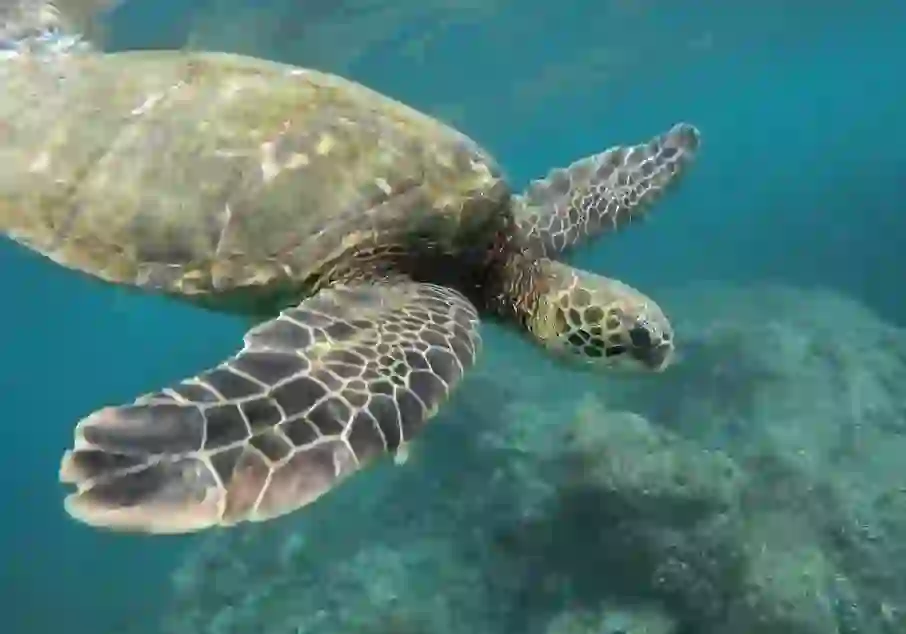
出典:https://pixabay.com/images/id-1868046/
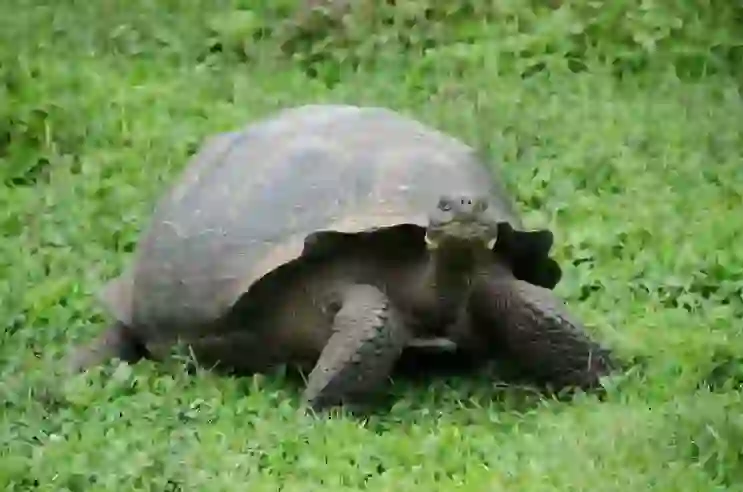
出典:https://pixabay.com/images/id-2386230/
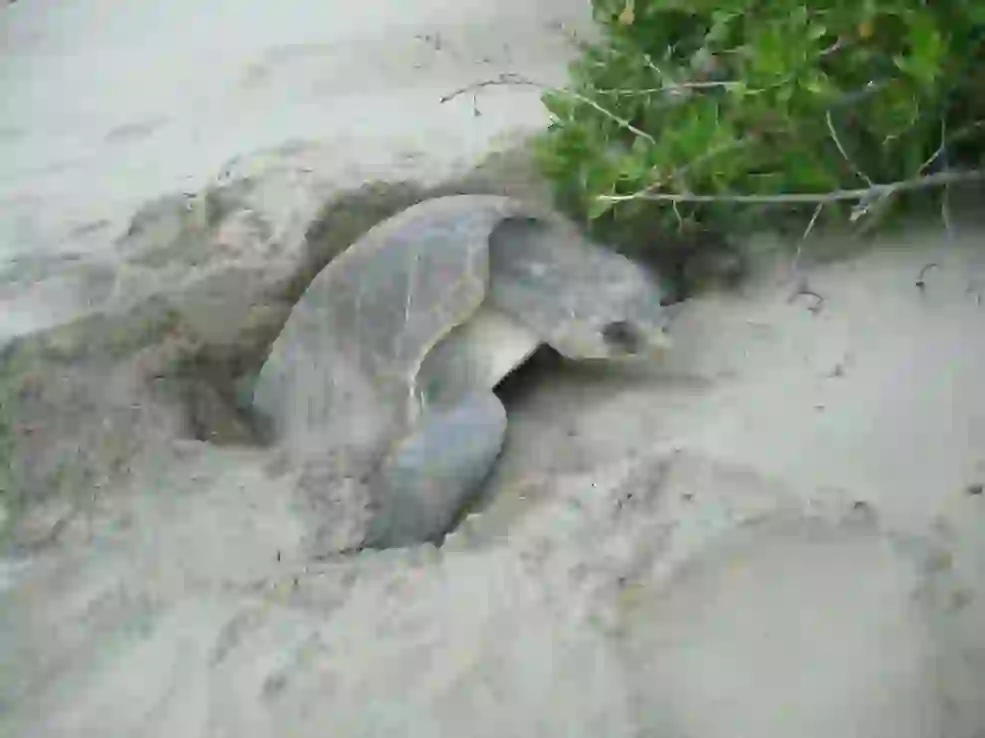
出典:https://pixabay.com/images/id-495673/
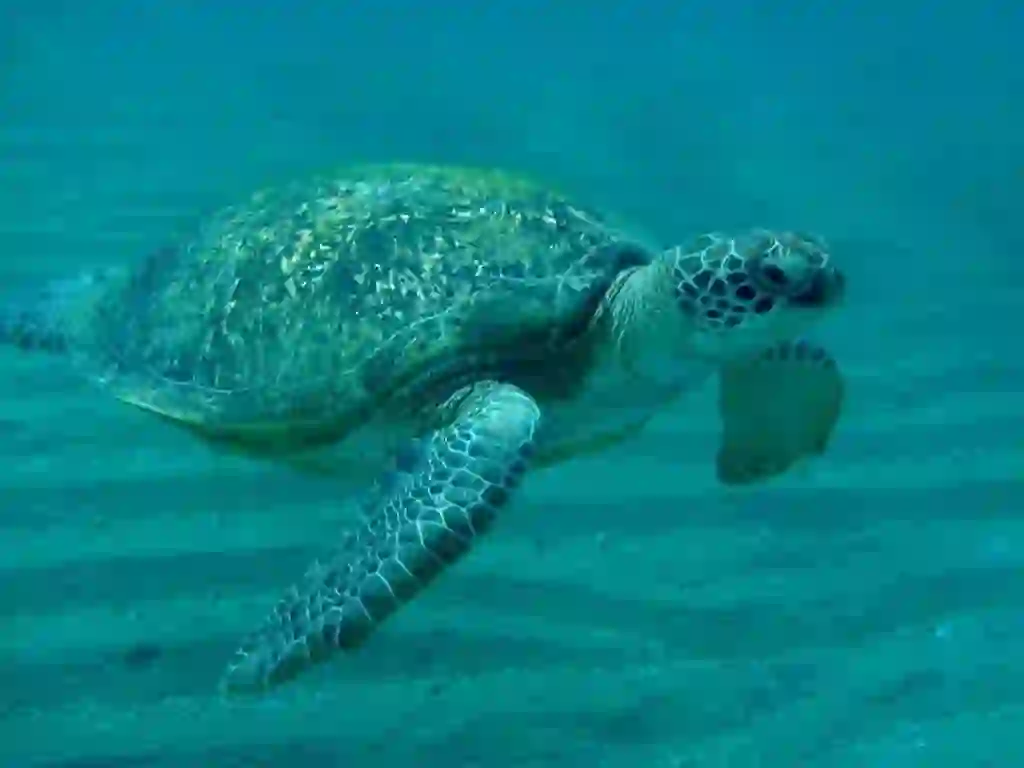
出典:https://pixabay.com/images/id-1053515/

出典:https://pixabay.com/images/id-1201602/

Help Enrich Our Animalbook.jp with Your Media!
We are constantly looking to expand and enrich our Animalbook.jp with amazing photos and videos of animals. If you have any media that you'd like to share, please contribute and help us showcase the beauty and diversity of the animal kingdom. Your submissions will be credited and featured in our encyclopedia, reaching a wide audience of animal lovers.


















